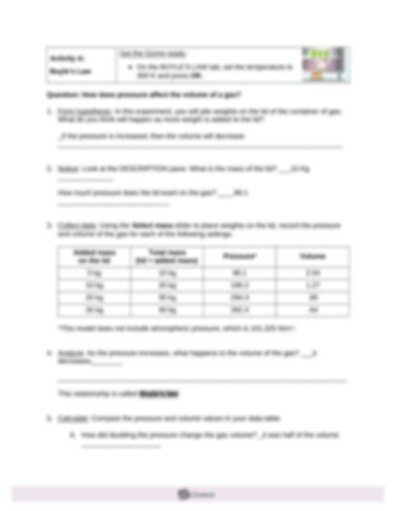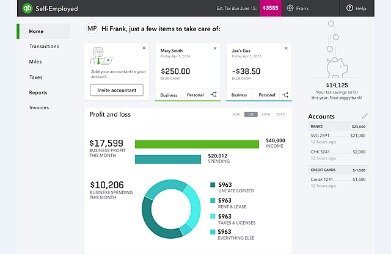Erreur de la base de données WordPress : [Table 'azwwfihwhoworld2.wp_mr_rating_item' doesn't exist]SELECT ri.rating_item_id, ri.rating_id, ri.description, ri.default_option_value, ri.max_option_value, ri.weight, ri.active, ri.type FROM wp_mr_rating_item as ri GROUP BY ri.rating_item_id
Contents:


Direct Materials cost combined with direct labor cost is called prime cost. Non-manufacturing costs are incurred by all type of business entities – entity can be a manufacturing, trading or service entity. Office and administrative costs – accountants’ salaries, office electricity, stationery costs, office executives’ salaries etc. PRODUCT COSTS – costs that are incurred to manufacture your products. It includes Direct Materials, Direct Labor, and Manufacturing Overhead. The opportunity to achieve a lower per-item fixed cost motivates many businesses to continue expanding production up to total capacity.
Manufacturing cost is essential to any business, from the smallest startup to the largest multinational corporation. It’s a good idea to grasp what manufacturing cost is and how it impacts your business, especially if you plan to start up or expand your operations. A manufacturer has to be able to produce more goods in a given period, which means that the company’s employees need to be more productive. They can do this by implementing new technologies and tools and training employees on how best to use those tools.
The impact of digital transformation on the total factor productivity of … – Nature.com
The impact of digital transformation on the total factor productivity of ….
Posted: Wed, 19 Apr 2023 10:44:49 GMT [source]
Also indicate whether the cost should be recorded as an expense when the cost is incurred or as an expense when the goods are sold. The costs of materials necessary to manufacture a product that are not easily traced to the product or that are not worth tracing to the product. Direct materials are raw materials that become an integral part of the finished goods. They are matched to a specific time period’s revenues rather than being included in the cost of goods sold. Manufacturing overhead cost combined with direct labor is called conversion cost.
How To Calculate Manufacturing Overhead
Non-manufacturing costs are not included in manufacturing overhead account but are charged directly to income statement. Examples of non-manufacturing expenses are sales commission, advertising expenses, rent of office building, and depreciation on the equipment used in office etc. Non-manufacturing costs are the indirect expenses that aren’t directly related to making a specific product or providing a particular service. Non-manufacturing costs include sales commissions, advertising, office supplies, rent/mortgage payments for company offices, and legal fees. Anything that isn’t directly tied to manufacturing or transporting your products. Direct materials cost is the cost of the raw materials that go into producing the finished product.
India Non-alcoholic Beverages Market Expected to Transform … – Digital Journal
India Non-alcoholic Beverages Market Expected to Transform ….
Posted: Fri, 21 Apr 2023 14:05:27 GMT [source]
It is classified into two, depending on whether the products are sold or not. When products are sold, the corresponding costs are presented as Cost of Goods Sold. When products are not sold, they are presented as Finished Goods Inventory. Direct Materials – cost of materials that can be traced directly to the products.
What Is The Formula Of Manufacturing Cost?
Since they are not allocated to goods produced, these costs never appear in the cost of inventory on a firm’s balance sheet. Manufacturing Overhead This refers to manufacturing costs other than direct material and direct labour costs. The major items included under manufacturing overhead are indirect materials, indirect labour, factory supplies, utilities depreciation, repairs and maintenance, and rent and insurance. Manufacturing costs initially form part of product inventory and are expensed out as cost of goods sold only when the inventory is sold out.
Philip Morris International : Glossary and Non-GAAP Reconciliations – Marketscreener.com
Philip Morris International : Glossary and Non-GAAP Reconciliations.
Posted: Thu, 20 Apr 2023 11:15:19 GMT [source]
Hearst Newspapers participates in various affiliate marketing programs, which means we may get paid commissions on editorially chosen products purchased through our links to retailer sites. Harold Averkamp has worked as a university accounting instructor, accountant, and consultant for more than 25 years. He is the sole author of all the materials on AccountingCoach.com.
Product vs Period Costs (Accounting) – Explained
Understand what overhead is, learn the manufacturing overhead formula, and see how to calculate manufacturing overhead. Finance costs – interest charges on loans and advances obtained from other entities or institutions etc. DIRECT COSTS – refer to costs that are directly traceable to a cost object. Items such as plastic parts, metal parts and paint can be examples of manufacturing inventory. The most significant disadvantage of ABC is that it can take a lot of time and effort to set up.
- DIRECT COSTS – refer to costs that are directly traceable to a cost object.
- To produce each widget, the business must purchase supplies at $10 each.
- For example plastic produced by manufacturers of plastic is a finished product for them but is a raw material for Compaq Computers for its personal computers.
- The type of raw material can be a factor that makes it more expensive or less expensive.
Manufacturing costs comprise of all costs that are incurred in the manufacturing process and are imperative to produce finished goods. Marketing and advertising costs – marketing campaign costs, advertising agency fees etc. These are so-called “inventoriable” costs, as they go first into inventory before being sold. NON-MANUFACTURING COSTS – from the term itself, costs that are not attributable to the manufacture of products. The principal financial cost is the interest on working capital advance, term loans, and debentures. Other financial costs that may be incurred by a business are commitment fee and bank commission.
Elements of Non-Manufacturing Costs
Marketing or selling costs include all costs necessary to secure customer orders and get the finished product into the hands of the customers. These costs are often called order getting or order filling costs. Examples of marketing or selling costs include advertising costs, shipping costs, sales commission and sales salary. Non-manufacturing costs are those costs that are not incurred to manufacture a product. Examples of such costs are salary of sales person and advertising expenses. Generally non-manufacturing costs are further classified into two categories.
These costs are normally classified by manufacturing companies as manufacturing and non-manufacturing costs. In the following paragraphs we will see how these costs are classified as manufacturing and non-manufacturing. Manufacturing costs are the expenses a company incurs to create its products. The cost of materials, labor and other fees go into making the product. These costs can also be divided into direct and indirect manufacturing costs.
For manufacturing companies, product costs are only costs that are necessary to produce a finished product. As discussed earlier in the tutorial, product costs (i.e. manufacturing costs) consist of direct materials, direct labor, and factory overhead. Although selling costs and general and administrative costs are considered nonmanufacturing costs, managers often want to assign some of these costs to products for decision-making purposes. For example, sales commissions and shipping costs for a specific product could be assigned to the product. However, as we noted earlier, managerial accounting information is tailored to meet the needs of the users and need not follow U.S. Answer Distinguishing between the two categories is critical because the category determines where a cost will appear in the financial statements.
Answer The wood used to build tables and the hardware used to attach table legs would be considered direct materials. These minor types of materials, often called supplies or indirect materials, are included in manufacturing overhead, which we define later. Non manufacturing costs may include salaries of the employees and the fringe benefits of selling and administrative purpose.
New machines are expensive and require additional training for employees using them. Suppose a manufacturer is not careful about how they implement new technology. In that case, they could use it ineffectively or even waste money on systems that don’t work for them (e.g., software that doesn’t fit the company’s needs). To illustrate this, let’s say that we have a company that makes widgets, and we want to know how much it costs us per widget to produce them. We would review our records from last month and find our beginning inventory, then add up all purchases during the month and subtract anything we sold at the end of the month.
This information is necessary for business owners to stay competitive and ensure their company is making money. For a company that uses direct costs, standard inventory valuation measurement must be used to avoid miscalculation of items which will affect the direct costs of production. Costs that are not related to the production of goods; also called nonmanufacturing costs. Indirect labor is the cost of production employees who are involved in the manufacturing process, but do not work on a specific product. Most items in the list above are self-explanatory, so they don’t require further explanation, while indirect materials and labor may benefit from further explication.

Overall, so far we have covered different types of product and period costs. Now, we will look in more detail how product costs are recorded by a company and how they flow from the beginning to the end of the manufacturing process. The ABC model relies on the idea that companies can better assess their financial performance when they assign costs to the activities that directly drive revenue. For example, instead of setting all production overhead costs to the « manufacturing » department, the ABC model gives these costs to the products or services that generate revenue. You may also want to compare prices with competitors’ products to offer similar quality at an affordable price point for consumers. In addition, manufacturing costs help companies determine how much profit they can make on each product.
If you’re hiring cash disbursement journal to work on your manufacturing line, you can reduce your costs by hiring people who are more efficient at their jobs. You want to make sure they’re good at what they do and that they’ll be able to handle the workload you have for them. This is especially important if you’re planning on having multiple shifts of employees working on your line. If one worker is less efficient than another, it could lead to mistakes and errors in the final product. The availability of raw materials has a significant impact on their price.
Employers must pay workers more if they work more than 8 hours per day or 40 hours per week. Next, you’ll need to figure out how many hours it will take to make 5,000 of these products. Being a professional blogger I like to share my knowledge regarding accounting, finance, investing,bonds and other related topics. In addition to i am a professional accountant in a Multinational company. All materials on termscompared.com is subject to copyright and cannot be copied and republished without proir written permission.
Period costs are costs necessary to maintain business operations but are not a necessary or integral part of the manufacturing process. They are matched with the revenues of a specific time period rather than included in the cost of the goods sold. Activity-based costing is a method of accounting that uses the cost of resources expended in each activity as the basis for assigning overhead costs to products or services.
- Manufacturing businesses calculate their overall expenses in terms of the cost of production per item.
- Non-manufacturing costs are those costs that are not incurred to manufacture a product.
- Marketing and advertising costs – marketing campaign costs, advertising agency fees etc.
- For example, sales commissions and shipping costs for a specific product could be assigned to the product.
- He is the sole author of all the materials on AccountingCoach.com.
A manufacturing entity incurs a plethora of costs while running its business. While manufacturing or production costs are the core costs for a manufacturing entity, the other costs are also just as important as they too affect overall profitability. Thus, management attention must be focused on both the core and the ancillary costs to control and manage them with a view to maximize profitability on long term basis. The classification would depend on the management, whether the cost is material enough to be considered direct, or some other factor they wanna base their decision. The point is… as long as it’s gonna be part of the cost of goods manufactured, it’s good.
Non-manufacturing costs include administrative costs, marketing and selling costs, finance costs etc. Direct labor cost is the wages paid to workers who help make your product. So, making wooden tables and using human labor to shape them into their final form would be considered a direct labor cost. Another example is if you made a t-shirt and had someone help you sew on the buttons, those wages would count towards your direct labor costs.

Examples of nonmanufacturing costs appear in Figure 1.5 « Examples of Nonmanufacturing Costs at Custom Furniture Company ». MasterCraft records these manufacturing costs as inventory on the balance sheet until the boats are sold, at which time the costs are transferred to cost of goods sold on the income statement. To help clarify which costs are included in these three categories, let’s look at a furniture company that specializes in building custom wood tables called Custom Furniture Company. Each table is unique and built to customer specifications for use in homes and offices . The sales price of each table varies significantly, from $1,000 to more than $30,000.
Indirect ones aren’t related to a single product but must be paid. As you can see form the list, indirect materials are an insignificant portion or not an integral part of the finished goods. Answer The two broad categories of costs are manufacturing costs and nonmanufacturing costs. Manufacturing and non-manufacturing costs together form total costs for a manufacturing entity.
